Abstract
The effects and side effects of overcorrection for self-stimulatory behaviors of two children in a specialized day-care program were evaluated. For one child, a “hand” overcorrection procedure involving arm and hand exercises was introduced contingent upon inappropriate hand movements and later contingent upon inappropriate foot movements. After “hand” overcorrection was withdrawn for inappropriate foot movements, a “foot” overcorrection procedure involving foot and leg exercises was introduced contingent upon inappropriate foot movements. For a second child, the “hand” overcorrection procedure was introduced contingent upon inappropriate hand movements during a free-play period, and later contingent upon inappropriate vocalizations at naptime. “Hand” overcorrection was withdrawn and then re-introduced sequentially for both behaviors. Several concurrent behaviors were measured to assess multiple effects of treatment. Results for both children indicated the “hand” overcorrection procedure suppressed inappropriate hand movements and inappropriate behaviors that were topographically dissimilar. In addition, inverse relationships were observed between the second child's inappropriate hand movements and appropriate toy usage during free play and between his inappropriate vocalizations and inappropriate foot movements during naptime. Results suggest that overcorrection procedures that are effective for one behavior can be used to reduce the frequency of topographically different behaviors. This finding is discussed in terms of its practical implications for therapists.
Full text
PDF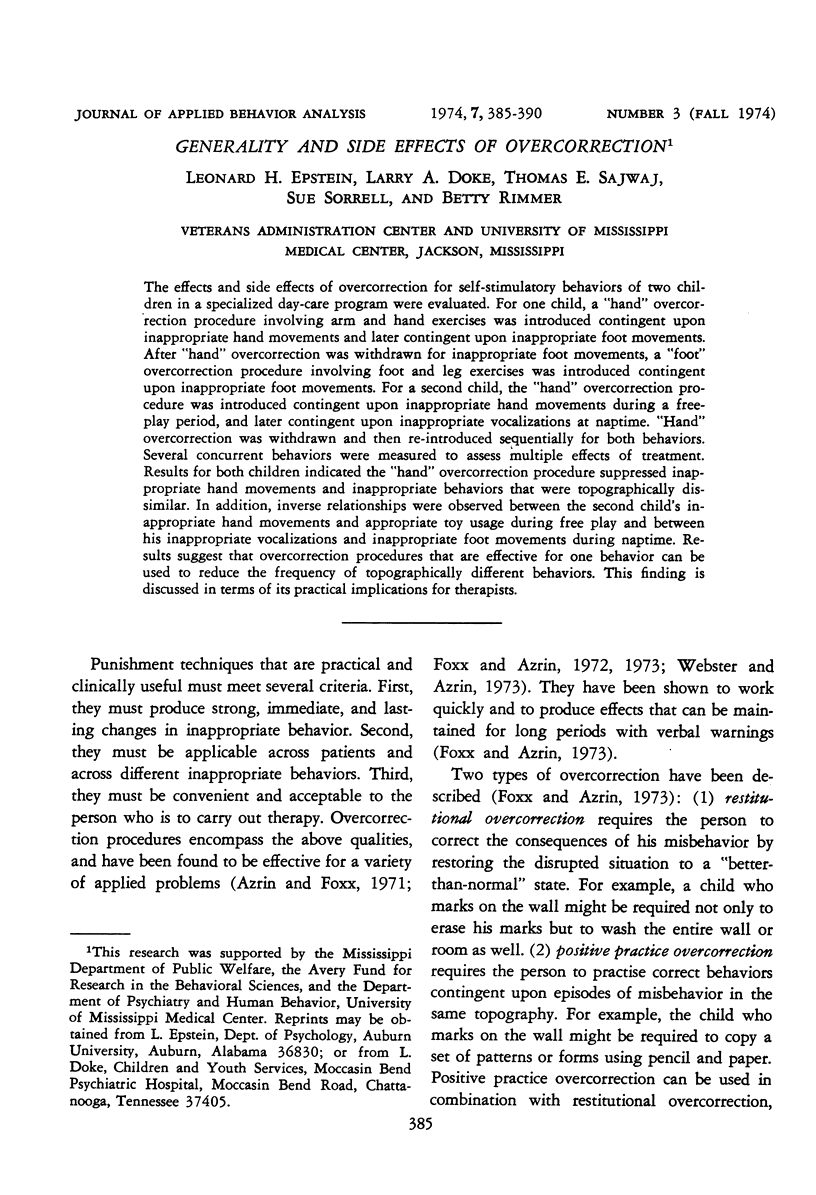
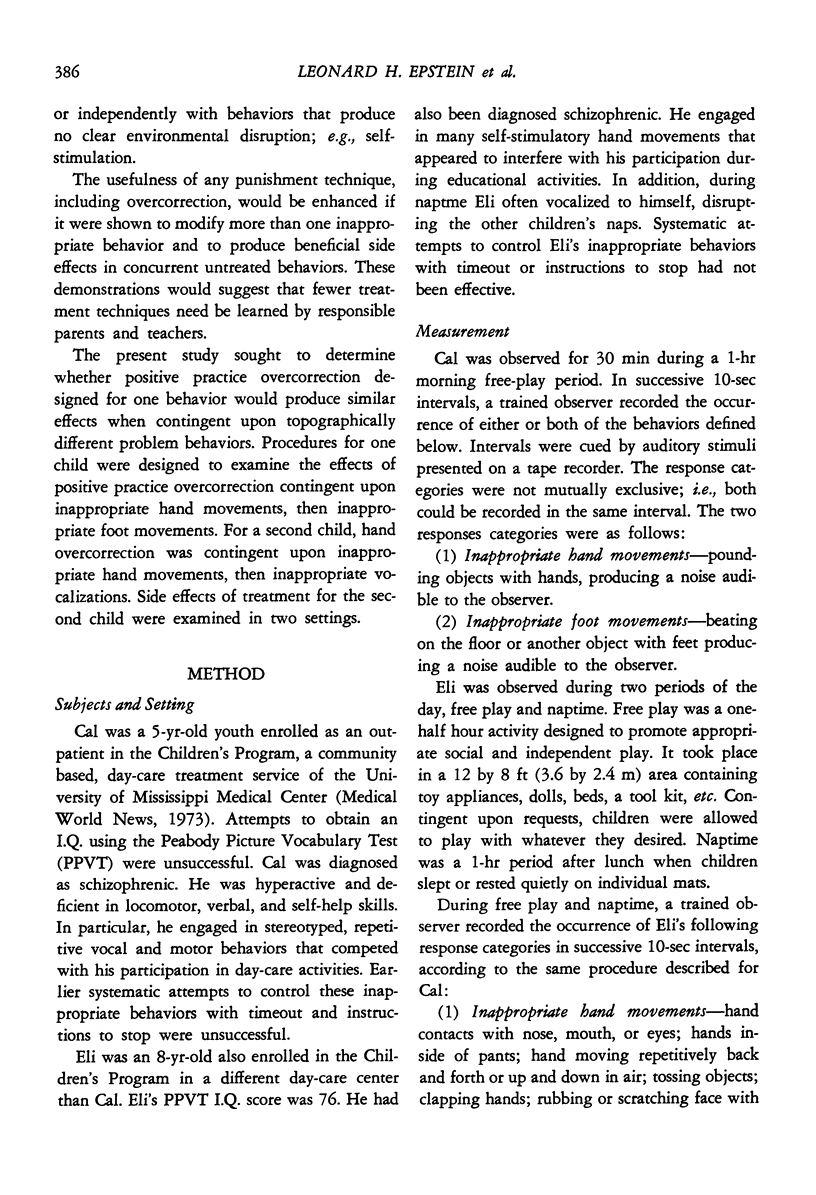
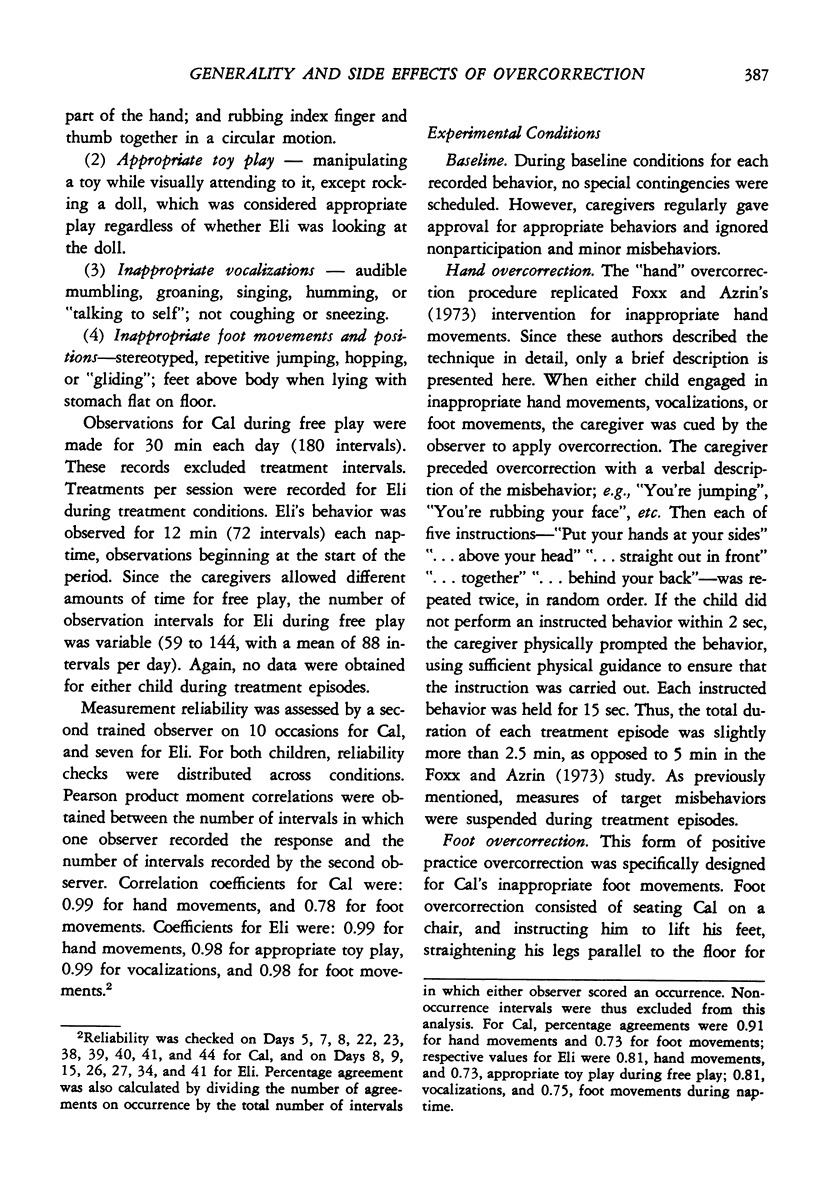
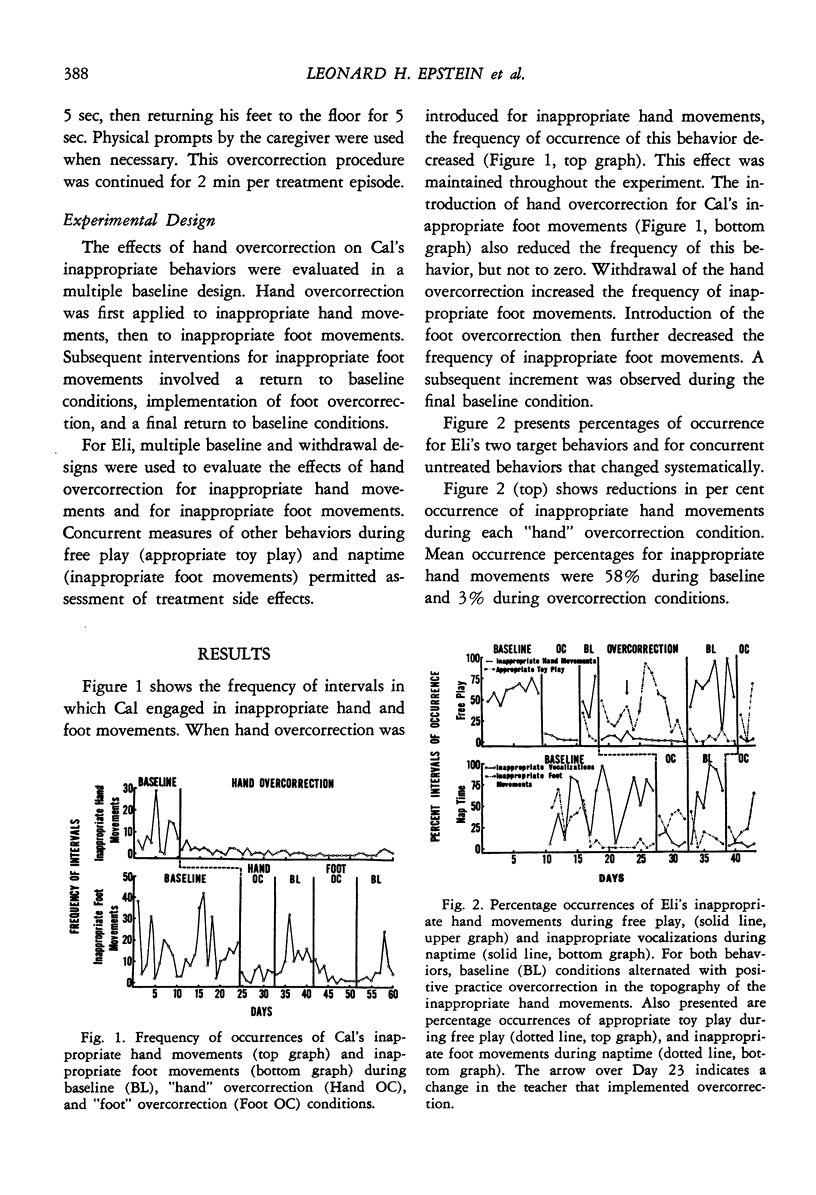
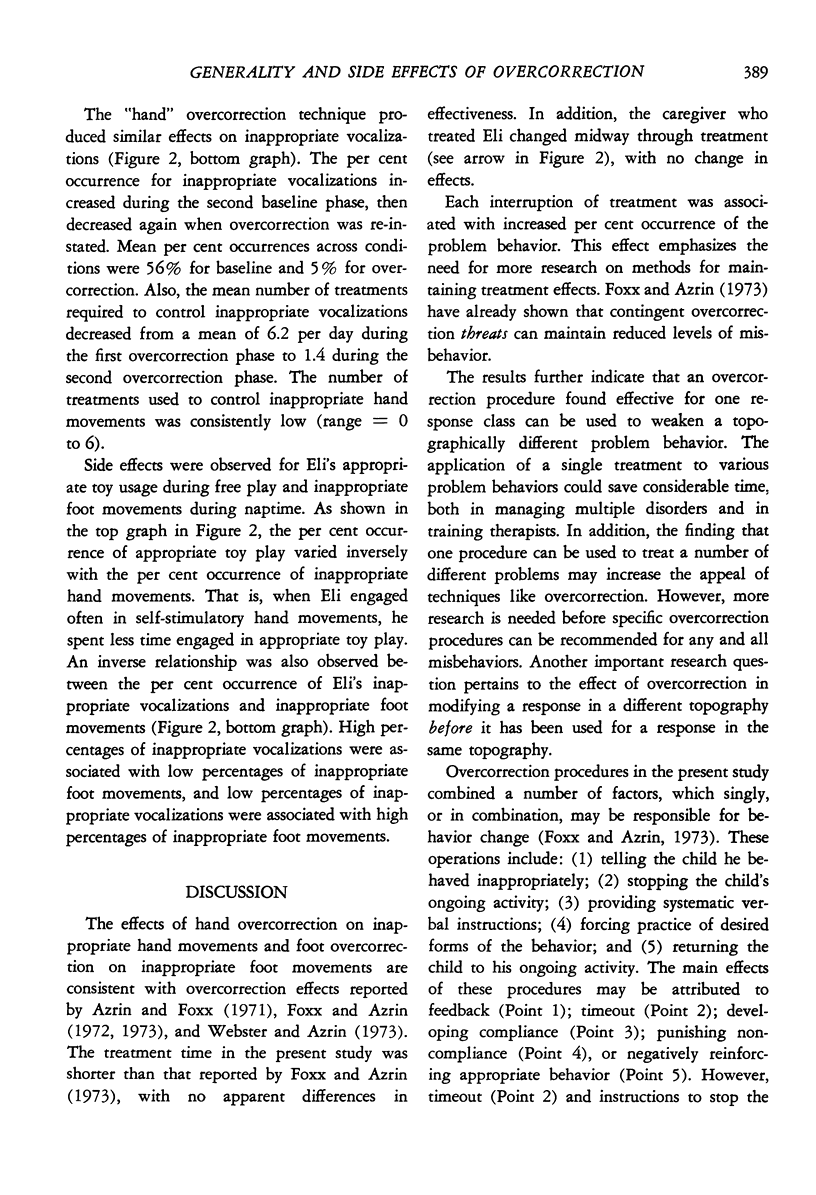
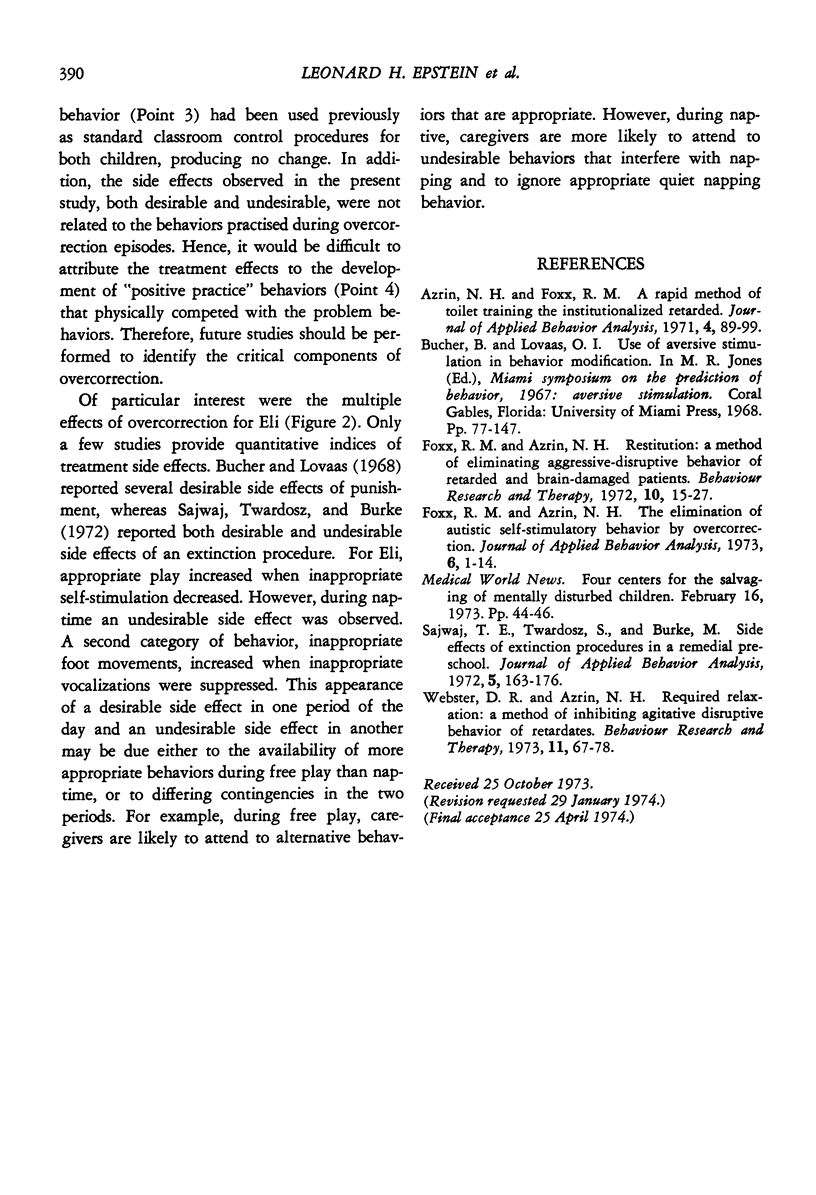
Selected References
These references are in PubMed. This may not be the complete list of references from this article.
- Azrin N. H., Foxx R. M. A rapid method of toilet training the institutionalized retarded. J Appl Behav Anal. 1971 Summer;4(2):89–99. doi: 10.1901/jaba.1971.4-89. [DOI] [PMC free article] [PubMed] [Google Scholar]
- Foxx R. M., Azrin N. H. Restitution: a method of eliminating aggressive-disruptive behavior of retarded and brain damaged patients. Behav Res Ther. 1972 Feb;10(1):15–27. doi: 10.1016/0005-7967(72)90003-4. [DOI] [PubMed] [Google Scholar]
- Foxx R. M., Azrin N. H. The elimination of autistic self-stimulatory behavior by overcorrection. J Appl Behav Anal. 1973 Spring;6(1):1–14. doi: 10.1901/jaba.1973.6-1. [DOI] [PMC free article] [PubMed] [Google Scholar]
- Sajwaj T., Twardosz S., Burke M. Side effects of extinction procedures in a remedial preschool. J Appl Behav Anal. 1972 Summer;5(2):163–175. doi: 10.1901/jaba.1972.5-163. [DOI] [PMC free article] [PubMed] [Google Scholar]
- Webster D. R., Azrin N. H. Required relaxation: a method of inhibiting agitative-disruptive behavior of retardates. Behav Res Ther. 1973 Feb;11(1):67–78. doi: 10.1016/0005-7967(73)90070-3. [DOI] [PubMed] [Google Scholar]


